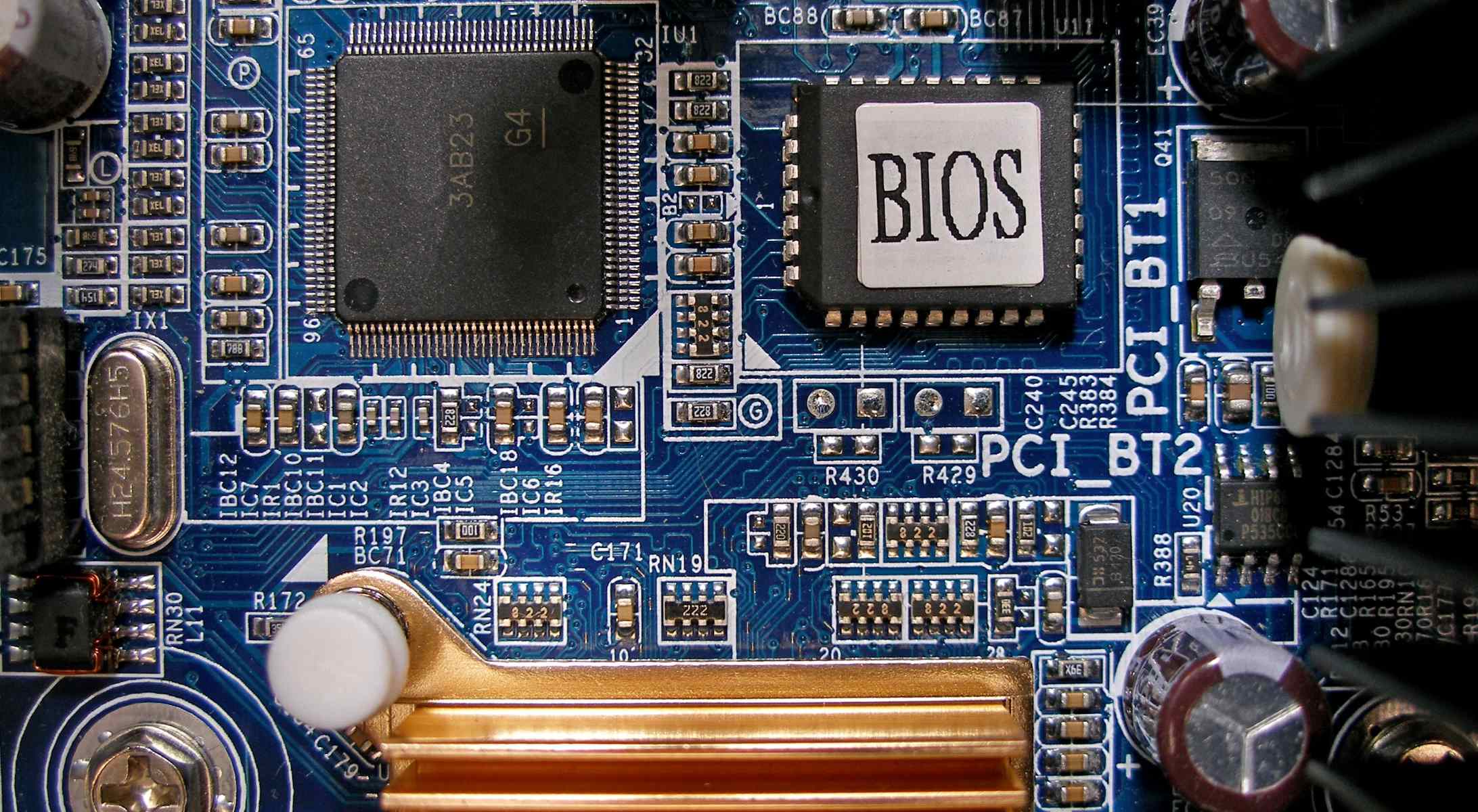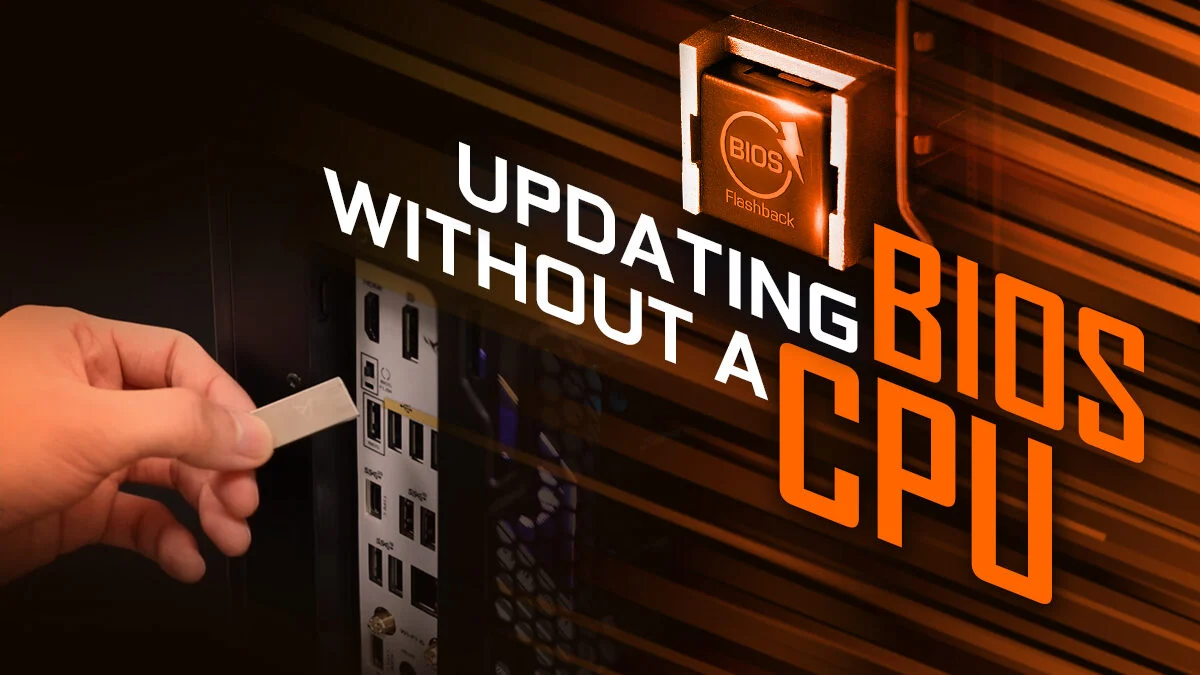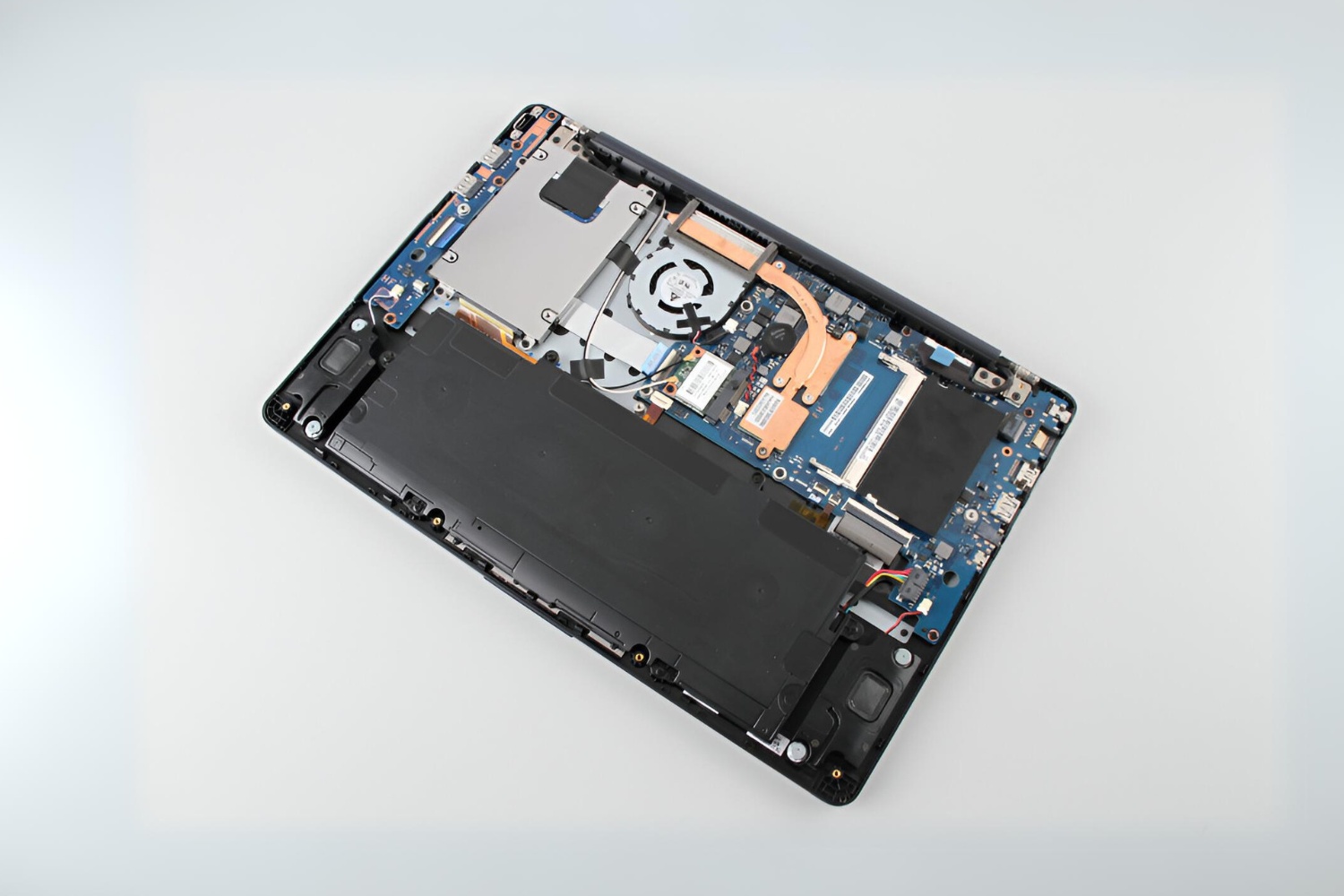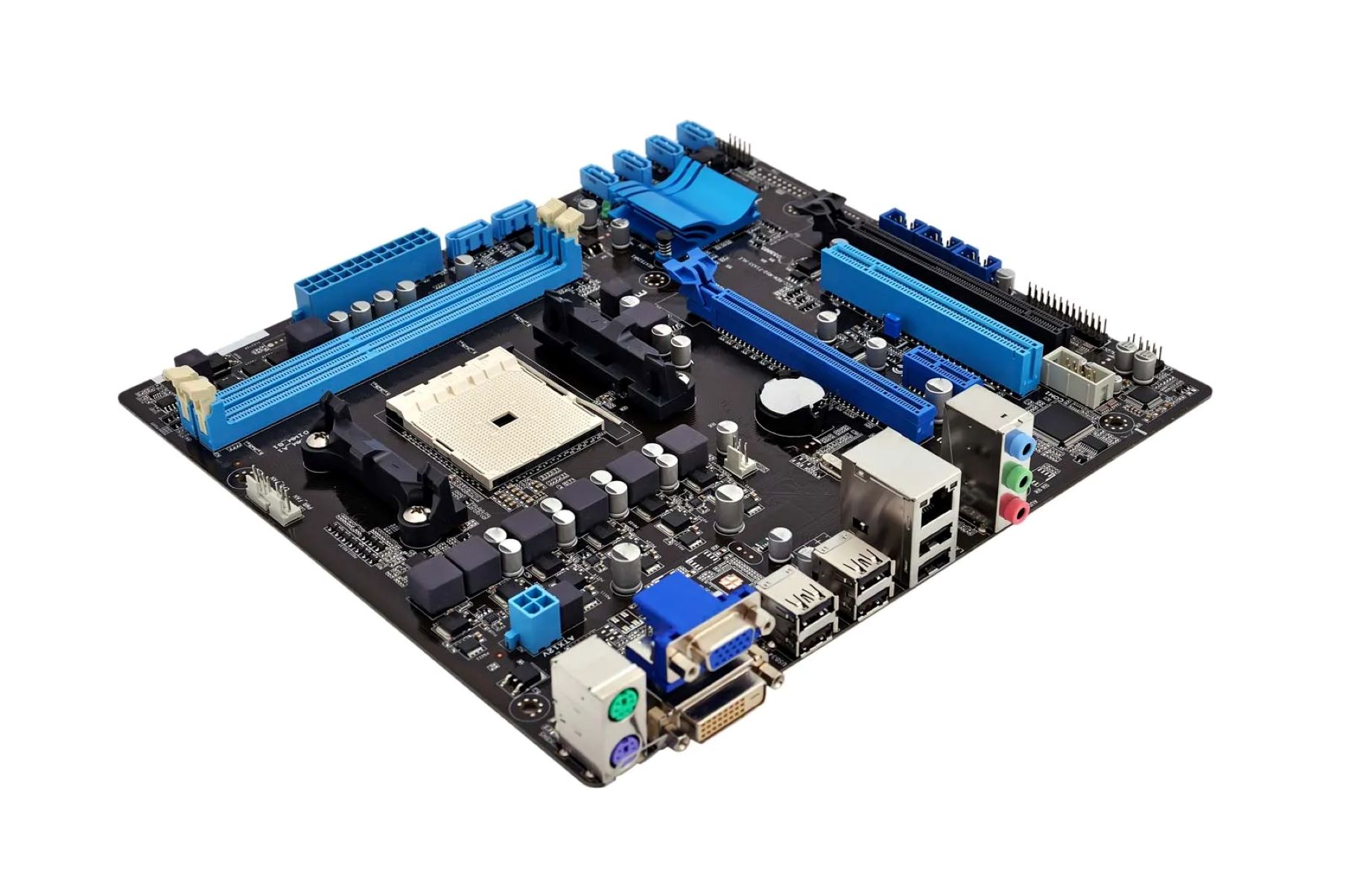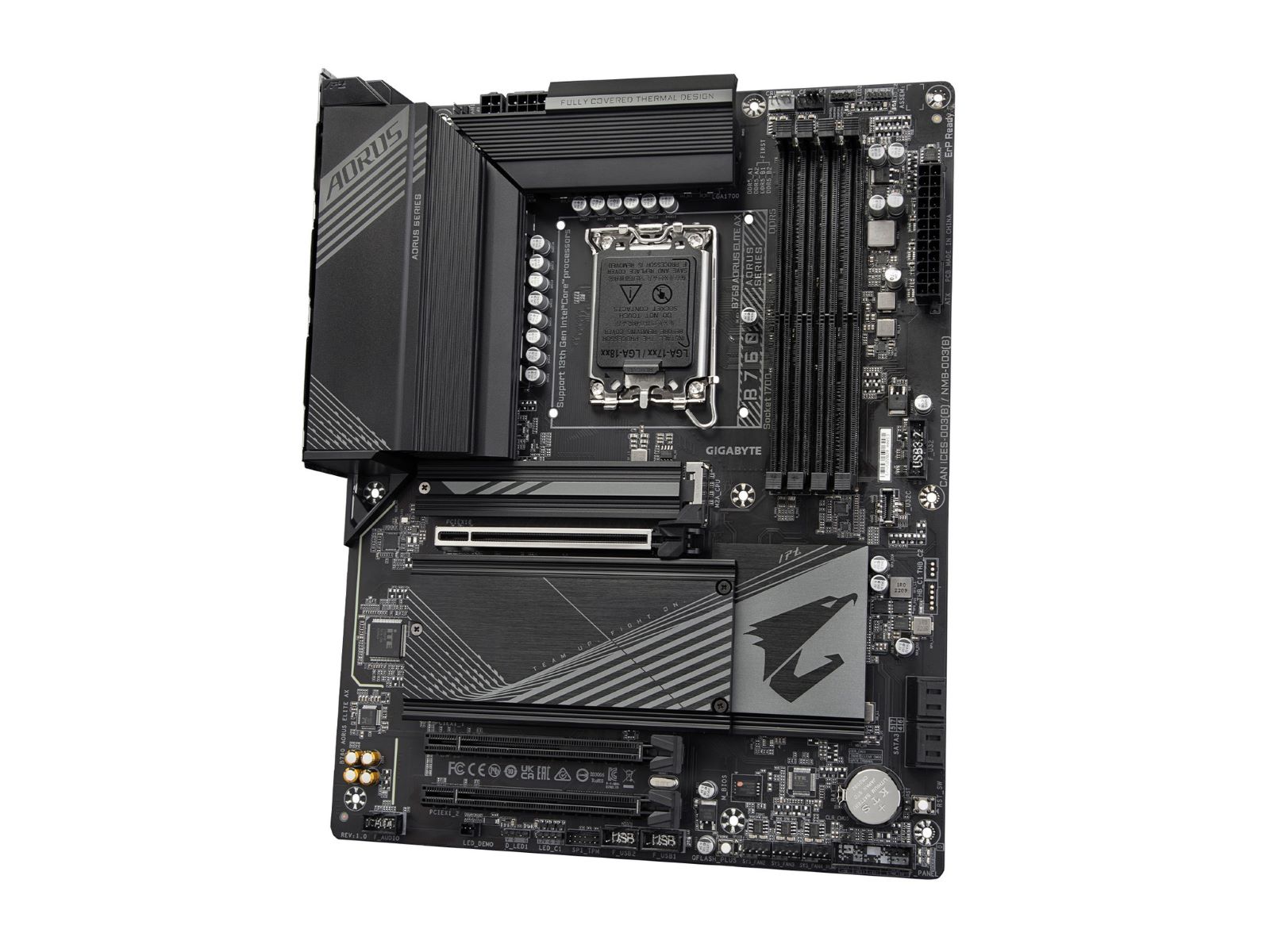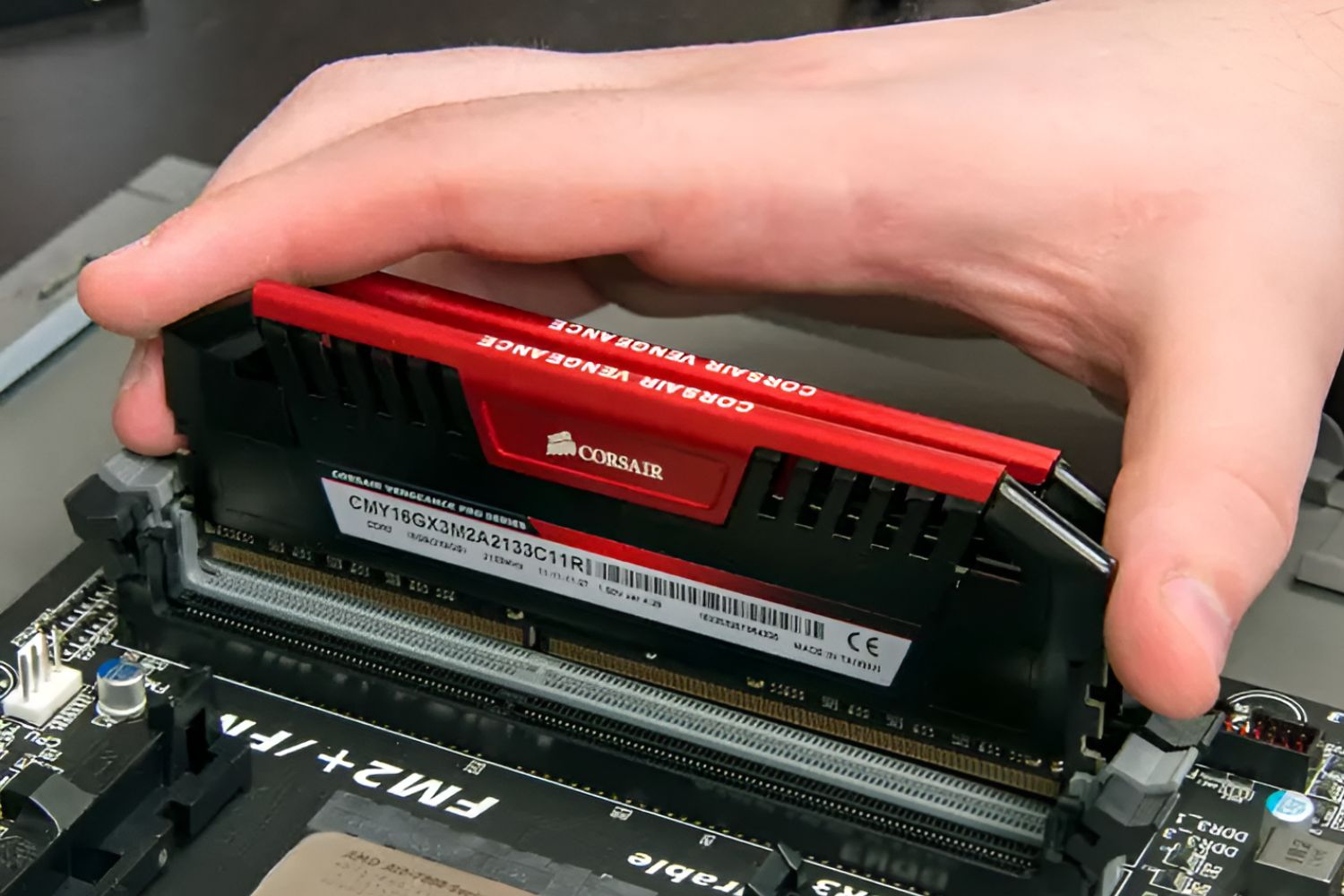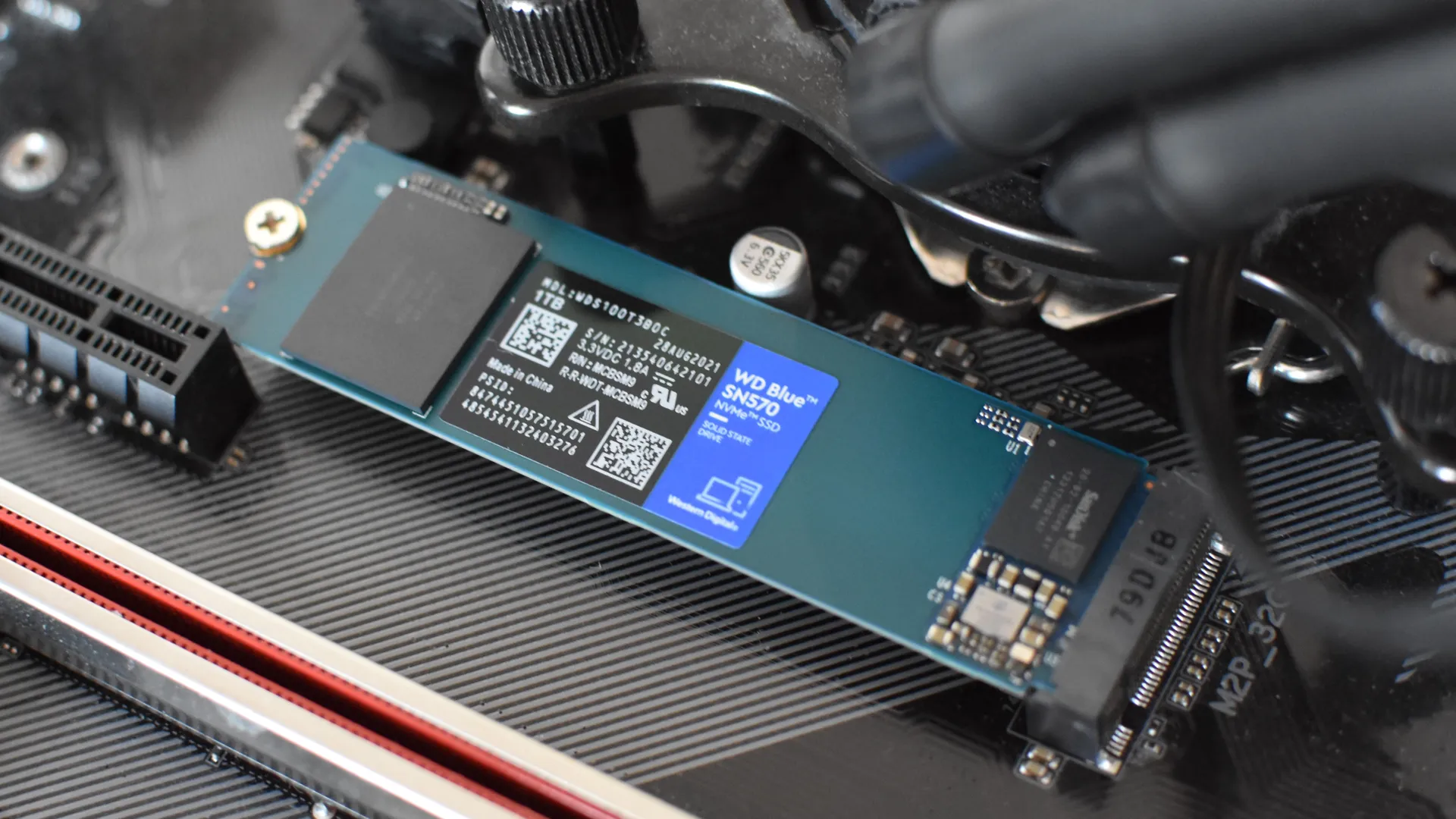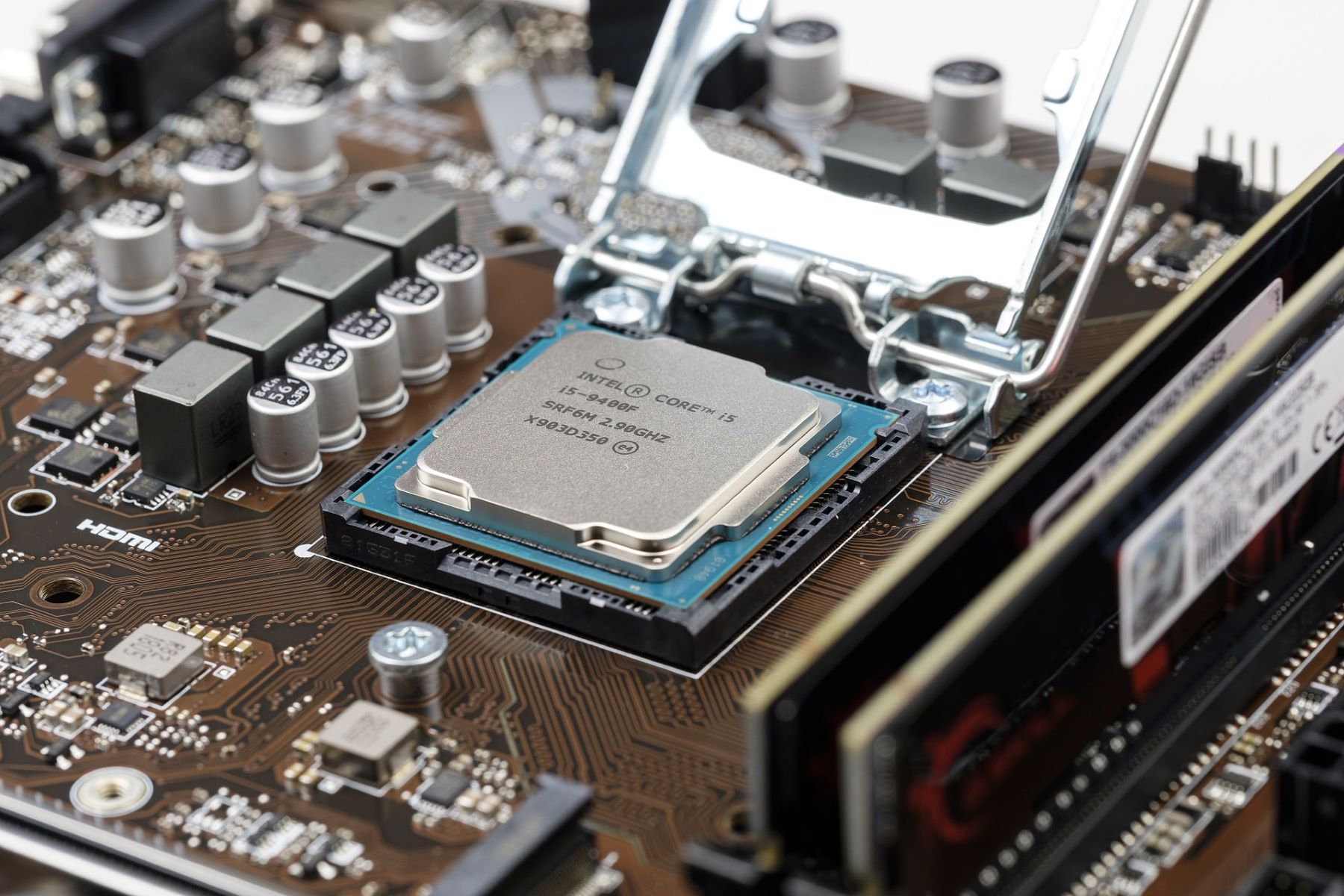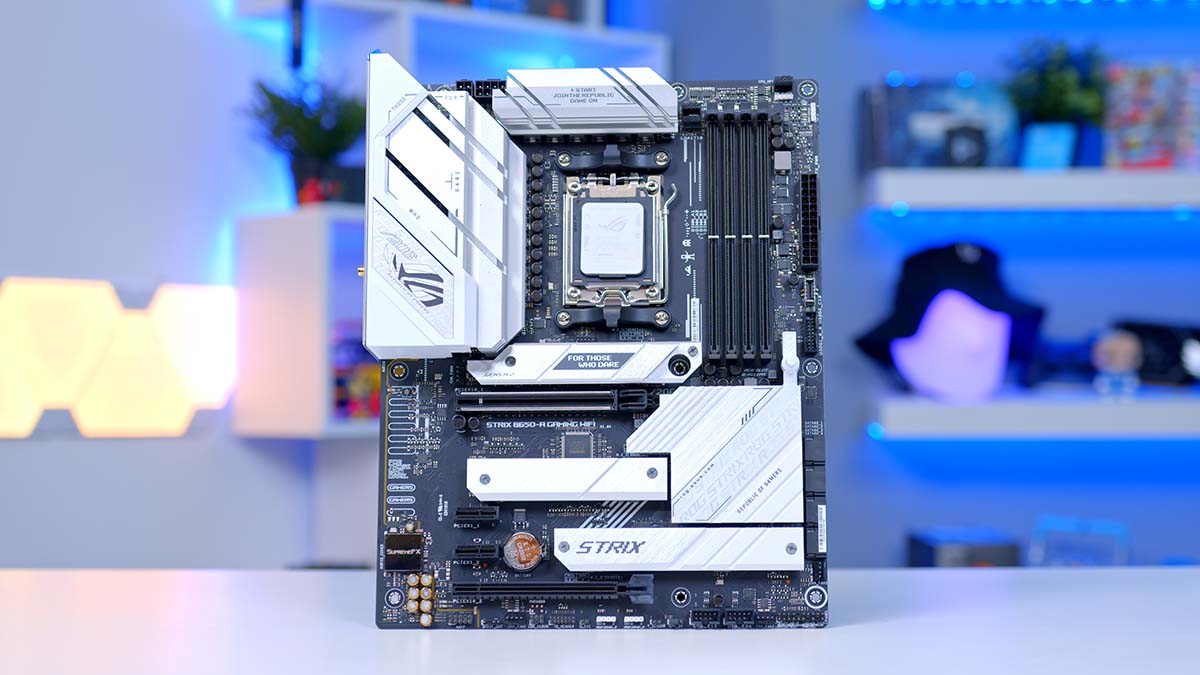Introduction
When it comes to removing and replacing the motherboard BIOS chip, having the right tools is essential. The BIOS chip, also known as the Basic Input/Output System chip, is responsible for initializing and setting up the hardware components of a computer. Over time, the BIOS may need to be updated or replaced due to various reasons, such as compatibility issues, system failures, or performance enhancements.
In this article, we will discuss the best tools available for safely removing and replacing the BIOS chip on a motherboard. Whether you are a computer enthusiast, a technician, or someone who wants to expand their knowledge on computer hardware, understanding the different tools will help you make an informed decision and ensure a successful replacement process.
Each tool serves a specific purpose and has its own advantages and limitations. The choice of tool depends on various factors such as your level of expertise, the specific motherboard model, and your budget. By exploring the pros and cons of each tool, you can determine which one suits your needs and preferences.
We will cover five main tools in this article: the soldering iron, hot air rework station, dedicated BIOS programmer, chip extraction tools, and soldering wick or solder sucker. Each tool offers its own unique method for removing and replacing the BIOS chip, and we will discuss the benefits and drawbacks of each option.
It’s important to note that replacing the BIOS chip requires a certain level of technical knowledge and skill. It is recommended to seek professional assistance if you are unsure or inexperienced in working with computer hardware. Additionally, always ensure you have a backup of your BIOS firmware and follow proper safety precautions while handling the motherboard and its components.
Now, let’s dive into the intricacies of each tool and determine which option would be the best fit for removing and replacing the motherboard BIOS chip.
Soldering Iron
A soldering iron is a commonly used tool for soldering electronic components, and it can also be utilized for removing and replacing a motherboard BIOS chip. This tool is popular among DIY enthusiasts and technicians due to its affordability and versatility.
Using a soldering iron to remove the BIOS chip requires careful precision and attention to detail. The first step is to heat the solder joints that connect the chip to the motherboard. This can be done by gently applying the heated soldering iron tip to each joint, melting the solder and allowing the chip to be easily lifted off the motherboard.
When replacing the BIOS chip, the soldering iron is used to reattach the chip to the motherboard by applying heat to the solder joints while carefully aligning the chip in place. This process requires caution to prevent any damage to the chip or the surrounding components.
Pros of using a soldering iron for removing and replacing the BIOS chip:
- Affordable: Soldering irons are readily available at a reasonable price, making them a cost-effective choice for those on a budget.
- Versatile: A soldering iron can be used for various soldering tasks besides removing and replacing the BIOS chip, making it a versatile tool to have in your arsenal.
- Precision: With the right technique and practice, a soldering iron can provide precise control over the soldering process, minimizing the risk of damaging the motherboard or other components.
Cons of using a soldering iron for removing and replacing the BIOS chip:
- Skill level required: Working with a soldering iron requires a certain level of skill and experience. Novice users may find it challenging to maintain the appropriate temperature and avoid damaging the chip or the motherboard.
- Time-consuming: The process of using a soldering iron to remove and replace the BIOS chip can be time-consuming, especially for those who are not familiar with the technique. It requires patience and attention to detail to ensure a successful replacement.
- Risk of damage: If not used properly, a soldering iron can cause damage to the motherboard or surrounding components. It is crucial to exercise caution and follow proper safety procedures.
In summary, a soldering iron is a viable option for removing and replacing the BIOS chip on a motherboard. It offers affordability, versatility, and precision. However, it requires a certain level of skill and may be time-consuming for novice users. Consider your level of expertise and confidence before opting for a soldering iron as your tool of choice for this task.
Hot Air Rework Station
A hot air rework station is a specialized tool designed specifically for soldering and desoldering electronic components. It uses a stream of heated air to melt the solder and remove or replace the motherboard BIOS chip. This tool is commonly used by professionals and advanced technicians due to its precision and efficiency.
The hot air rework station consists of a heating element and a nozzle through which the heated air is directed onto the solder joints. The temperature and airflow can be controlled, allowing for precise adjustments based on the specific requirements of the BIOS chip and motherboard.
To remove the BIOS chip using a hot air rework station, the heated airflow is directed onto the solder joints. This melts the solder, loosening the chip and allowing it to be easily lifted off the motherboard. When replacing the BIOS chip, the hot air rework station is used to heat the solder joints and ensure proper bonding between the chip and the motherboard.
Pros of using a hot air rework station for removing and replacing the BIOS chip:
- Precision: A hot air rework station offers precise control over temperature and airflow, allowing for accurate and efficient soldering and desoldering of the BIOS chip.
- Efficiency: The hot air stream quickly heats the solder joints, reducing the time required to remove and replace the BIOS chip and minimizing the risk of damage to the motherboard.
- Non-contact method: Unlike a soldering iron, the hot air rework station does not require direct contact with the chip or the solder joints. This reduces the risk of accidental damage to the surrounding components.
Cons of using a hot air rework station for removing and replacing the BIOS chip:
- Higher cost: Hot air rework stations are more expensive compared to soldering irons, making them a less affordable option for those on a tight budget.
- Specialized tool: The hot air rework station is a specialized tool that may not have many uses beyond soldering and desoldering electronic components. It may not be worth the investment for those who do not frequently work with motherboard repairs.
- Limited flexibility: While the hot air rework station offers precise control, it may not be suitable for all motherboard models or scenarios. Some chips may require different techniques or tools for removal and replacement.
In summary, a hot air rework station is a powerful and efficient tool for removing and replacing the BIOS chip. It offers precision, efficiency, and a non-contact method of soldering and desoldering. However, it comes with a higher cost and limited flexibility for those who do not frequently undertake motherboard repair tasks. Consider your budget and level of expertise before choosing a hot air rework station for the BIOS chip removal and replacement process.
Dedicated BIOS Programmer
A dedicated BIOS programmer is a specialized tool designed specifically for programming and flashing BIOS chips. Unlike the previous methods, which involve physical removal and replacement of the BIOS chip, a dedicated BIOS programmer allows for direct programming of the chip without the need to remove it from the motherboard.
The dedicated BIOS programmer connects to the BIOS chip socket on the motherboard, enabling you to read the existing firmware, make modifications, and flash it with a new BIOS version. It offers a convenient and efficient way to update or replace the BIOS chip without the risks associated with physical removal and soldering.
To use a dedicated BIOS programmer, you will need to consult the manufacturer’s instructions and software guide. Typically, you will download the BIOS firmware onto your computer and then use the programmer to transfer the new firmware onto the chip. This method is often preferred by advanced users and technicians who are familiar with BIOS flashing procedures.
Pros of using a dedicated BIOS programmer:
- Non-invasive: The dedicated BIOS programmer allows for firmware updates and replacements without physically removing the chip from the motherboard or soldering.
- Convenient and time-saving: Programming the BIOS chip directly through a dedicated programmer is quicker and easier than physically removing and replacing the chip.
- Less risk of damage: Since the chip remains on the motherboard, there is a lower risk of damaging the chip or surrounding components during the removal or replacement process.
Cons of using a dedicated BIOS programmer:
- Specialized tool: Dedicated BIOS programmers are designed for specific chipsets and may not work with all motherboard models. Ensure compatibility before investing in a dedicated programmer.
- Additional cost: Purchasing a dedicated BIOS programmer may require an additional investment, especially if you don’t frequently perform BIOS updates or replacements.
- Firmware compatibility: It’s important to ensure that the firmware you plan to flash onto the BIOS chip is compatible with your motherboard and its components. Using incompatible firmware can result in system instability or failure.
In summary, a dedicated BIOS programmer offers a non-invasive and convenient method for updating or replacing the BIOS chip. It eliminates the need for physical removal or soldering, reducing the risk of damage to the chip and the motherboard. However, it is a specialized tool that may require additional investment and careful consideration of firmware compatibility.
Chip Extraction Tools
Chip extraction tools are specifically designed for safely removing integrated circuits, including BIOS chips, from their sockets. These tools come in various forms, such as chip pullers, IC extractors, or chip clips. They provide a more secure grip and controlled extraction of the chip, minimizing the risk of damage to the chip or the surrounding components.
Using chip extraction tools involves inserting the tool’s prongs or clips into the notches or holes on the sides of the BIOS chip. Once securely in place, the tool is gently squeezed or twisted to release the chip from its socket. This process requires careful handling and proper technique to avoid bending or breaking any pins on the chip.
Before using chip extraction tools, it is essential to ensure that the motherboard and the chip are compatible with the specific tool you intend to use. Not all extraction tools are suitable for all chip sizes or socket types. Respecting the manufacturer’s guidelines and recommendations will help ensure a safe and successful removal of the BIOS chip.
Pros of using chip extraction tools:
- Secure grip: Chip extraction tools provide a more secure grip on the chip, reducing the risk of accidental slippage or damage during the removal process.
- Controlled extraction: These tools allow for controlled and precise extraction of the BIOS chip from its socket, minimizing the chance of bending or breaking any of the chip’s pins.
- Compatibility: With a wide range of chip extraction tools available, you can choose the one that is best suited for your specific motherboard and BIOS chip, ensuring a reliable and safe removal process.
Cons of using chip extraction tools:
- Additional cost: If you are performing a one-time BIOS chip removal and replacement, investing in a chip extraction tool may not be justifiable, as it is a specialized tool with limited usage.
- Skill required: While chip extraction tools provide a secure grip, they still require proper technique and skill to avoid damaging the chip or other components during the removal process.
- Compatibility constraints: Chip extraction tools may not be compatible with all motherboard models or chip sizes, so it is essential to ensure compatibility before using a specific tool.
In summary, chip extraction tools offer a secure and controlled method for removing the BIOS chip from its socket. They provide a more reliable grip and reduce the risk of damage to the chip or surrounding components. However, you should consider the additional cost, skill required, and compatibility constraints before investing in a chip extraction tool.
Soldering Wick or Solder Sucker
When it comes to removing soldered components, such as the BIOS chip, soldering wick or a solder sucker can be useful tools. Both options aim to remove excess solder, allowing for the safe extraction or replacement of the chip.
Soldering wick, also known as desoldering braid, is a thin copper wire coated with flux. It is placed on top of the soldered joint and heated with a soldering iron. The heat causes the solder to melt, and the wick absorbs the liquid solder, effectively removing it from the joint. This method requires careful placement and application to ensure the solder is properly absorbed by the wick.
On the other hand, a solder sucker, also referred to as a desoldering pump, uses suction to remove excess solder. It features a plunger mechanism that, when triggered, creates a vacuum that sucks up the molten solder. The solder sucker typically has a nozzle that is placed directly on top of the soldered joint, providing a quick and efficient removal process.
Using solder wick or a solder sucker to remove the BIOS chip requires precision and patience. The excess solder needs to be carefully and thoroughly removed to ensure a successful extraction. Once the old chip is removed, the same tools can be used to clean up any remaining solder from the motherboard before replacing the BIOS chip.
Pros of using soldering wick or solder sucker:
- Effective solder removal: Both soldering wick and solder sucker are designed to remove excess solder, making them suitable for the desoldering process involved in replacing the BIOS chip.
- Accessible and affordable: Soldering wick and solder suckers are relatively inexpensive and widely available, making them accessible options for DIY enthusiasts or technicians on a budget.
- Minimal risk of damage: When used correctly, soldering wick or a solder sucker reduces the risk of damage to the chip or surrounding components during the desoldering process.
Cons of using soldering wick or solder sucker:
- Skill requirement: Using soldering wick or a solder sucker effectively requires some skill, especially for novice users. The proper technique and application are necessary to ensure successful solder removal.
- Time-consuming: Desoldering using soldering wick or a solder sucker can be a time-consuming process, especially when dealing with numerous solder joints. Patience and attention to detail are essential for a satisfactory result.
- Cleaning and residue: After removing the excess solder, it is important to clean up any residue or debris from the desoldering process. Proper cleaning is crucial to ensure optimal contact when replacing the BIOS chip.
In summary, both soldering wick and solder suckers offer effective ways to remove excess solder for the extraction or replacement of the BIOS chip. They are accessible and affordable options, but they require some skill and can be time-consuming. Proper cleaning and attention to detail are necessary for a successful desoldering process.
Conclusion
When it comes to removing and replacing the motherboard BIOS chip, it is important to have the appropriate tools for the task. Each tool discussed in this article has its advantages and limitations, and the choice depends on factors such as budget, skill level, and personal preferences.
The soldering iron is a cost-effective and versatile option, but it requires skill and patience to ensure the safe removal and replacement of the BIOS chip. The hot air rework station offers precision and efficiency, making it a preferred choice for professionals or advanced technicians. The dedicated BIOS programmer provides a non-invasive method for updating or replacing the BIOS chip, eliminating the need for physical removal. Chip extraction tools offer a secure grip and controlled extraction, but they may not be necessary for one-time use or compatibility restrictions. Soldering wick or a solder sucker effectively remove excess solder, but they require skill and time for successful desoldering.
Before undertaking any BIOS chip removal or replacement, it is crucial to ensure that you have the necessary expertise and knowledge. If you are unsure or inexperienced, seeking professional assistance is recommended to avoid damaging the motherboard or other components.
Remember to always follow proper safety precautions, such as wearing appropriate protective gear and handling the motherboard and its components with care. It is also vital to have a backup of your BIOS firmware and ensure compatibility with the replacement firmware before proceeding with any changes.
By understanding the different tools available and their pros and cons, you can make an informed decision on which tool is the best fit for your needs. Whether you choose a soldering iron, hot air rework station, dedicated BIOS programmer, chip extraction tools, or soldering wick/solder sucker, having the right tool will make the BIOS chip removal and replacement process smoother and more successful.







